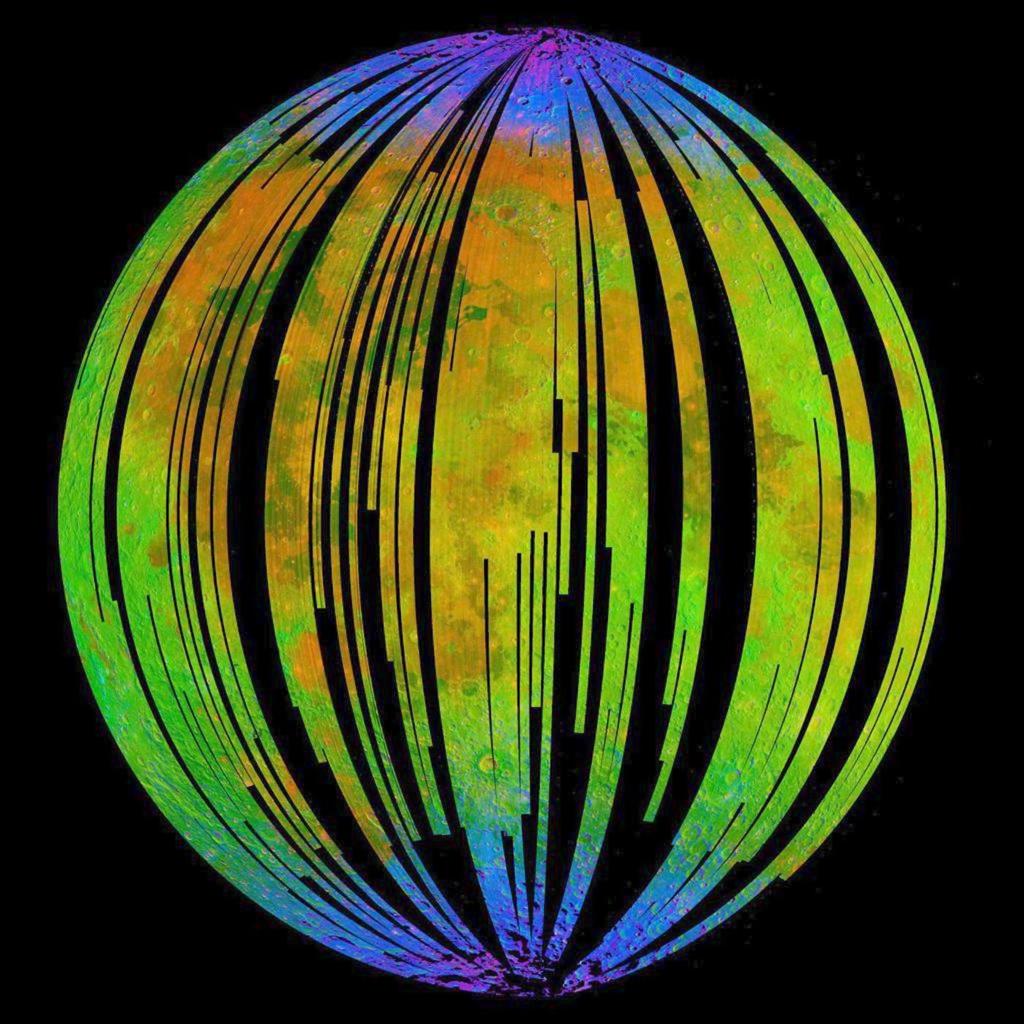News of the Weird
Published 6:00 am Saturday, September 12, 2020

- The blue areas in this composite image from the Moon Mineralogy Mapper (M3) aboard the Indian Space Research Organization’s Chandrayaan-1 orbiter show water concentrating at the moon’s poles. Homing in on the spectra of rocks there, researcher found signs of hematite, a form of rust.
The Earth is making the moon rust
PASADENA, Calif. — The moon is rusting, and NASA’s Jet Propulsion Laboratory in a press release reported scientists are working to find out why.
The moon is without air, but new research indicates the presence of hematite, a form of rust that normally requires oxygen and water. According to the press release, a new paper in Science Advances reviews data from the Indian Space Research Organization’s Chandrayaan-1 orbiter, which discovered water ice and mapped out a variety of minerals while surveying the moon’s surface in 2008.
Lead author Shuai Li of the University of Hawaii studied that water extensively in data from Chandrayaan-1’s Moon Mineralogy Mapper instrument, or M3, which the Jet Propulsion Laboratory built.
“Water interacts with rock to produce a diversity of minerals, and M3 detected spectra — or light reflected off surfaces — that revealed the moon’s poles had a very different composition than the rest of it,” according to the press release.
While iron-rich rocks litter the moon’s surface, Li was surprised to find a close match with the spectral signature of hematite. The mineral is a form of iron oxide, or rust, which results from exposing iron is to oxygen and water. The moon, however, lacks oxygen and liquid water.
“It’s very puzzling,” Li said in the press release. “The moon is a terrible environment for hematite to form in.”
So he turned to JPL scientists Abigail Fraeman and Vivian Sun to help poke at the data and confirm his discovery of hematite.
“At first, I totally didn’t believe it. It shouldn’t exist based on the conditions present on the moon,” Fraeman said. “But since we discovered water on the moon, people have been speculating that there could be a greater variety of minerals than we realize if that water had reacted with rocks.”
Solar wind plays major roleThe mystery starts with the solar wind, the stream of charged particles that flows from the sun, that bombard Earth and the moon with hydrogen. But hydrogen makes it harder for hematite to form because it adds electrons to the materials it interacts with. Hematite requires an oxidizer, which removes electrons.
Still, Fraeman and Sun became convinced M3’s data indicated the presence of hematite at the lunar poles and set about finding an explanation for why it’s on the moon. After months of research they hit upon the source: the Earth.
The solar wind stretches Earth’s magnetic field so it trails behind the planet like a windsock. In 2007, Japan’s Kaguya orbiter discovered that oxygen from Earth’s upper atmosphere can hitch a ride on this trailing magnetotail, traveling the 239,000 miles to the moon.
That fits with the data from M3, which found more hematite on the moon’s Earth-facing near side than on its far side.
“This suggested that Earth’s oxygen could be driving the formation of hematite,” Li said in the press release.
And while hydrogen from the solar wind should act to reduce the rust effect, Earth’s magnetotail blocks more than 99% of the solar wind during certain periods of the moon’s orbit — specifically, whenever it’s in the full Moon phase, and that opens occasional windows during the lunar cycle when rust can form.
Still, the water on the moon is in shadowed craters on its far side, a long way from the location of the hematite at the poles.
Li proposes that fast-moving dust particles that regularly pelt the moon could release surface-borne water molecules, mixing them with iron in the lunar soil. Heat from these impacts could increase the oxidation rate; the dust particles themselves also may carry water molecules, implanting them into the surface so they mix with iron.
“During just the right moments — namely, when the moon is shielded from the solar wind and oxygen is present — a rust-inducing chemical reaction could occur,” the press release states.
NASA reported it needs more data to determine exactly how the water is interacting with rock. That data also could help explain another mystery: why smaller quantities of hematite are forming on the far side of the moon, where the Earth’s oxygen shouldn’t be able to reach.
More science to comeFraeman also said this model may also explain hematite on other airless bodies like asteroids.
“It could be that little bits of water and the impact of dust particles are allowing iron in these bodies to rust,” she said.
Li noted it’s an exciting time for lunar science. Almost 50 years since the last Apollo landing, the moon is a major destination again. NASA plans to send dozens of new instruments and technology experiments to study the moon beginning next year, followed by human missions beginning in 2024 all as part of the Artemis program.
JPL also is building a new version of M3 for an orbiter called Lunar Trailblazer. One of its instruments, the High-resolution Volatiles and Minerals Moon Mapper (HVM3), will be mapping water ice in permanently shadowed craters on the Moon, and may be able to reveal new details about hematite as well.
“I think these results indicate that there are more complex chemical processes happening in our solar system than have been previously recognized,” Sun said.
“We can understand them better by sending future missions to the Moon to test these hypotheses.”





